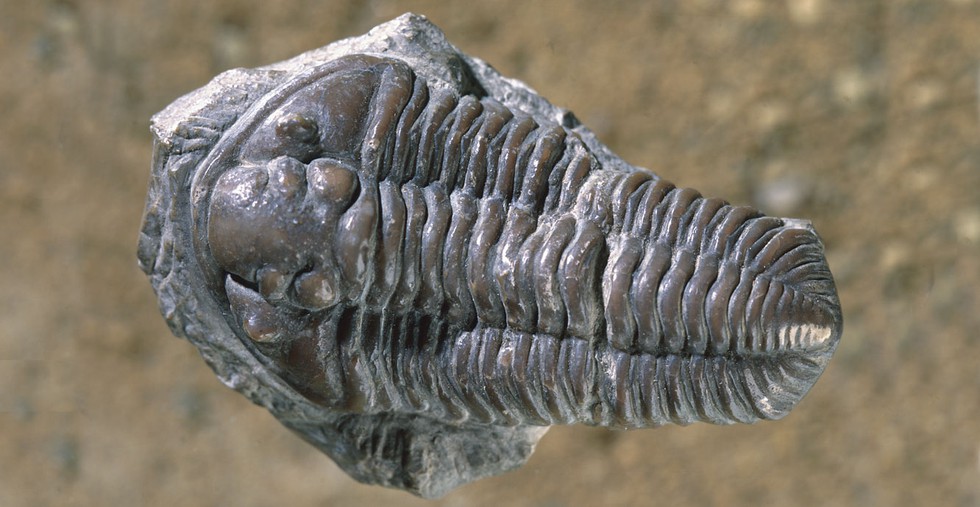
About Siddha Medicine:
- It is a traditional system of healing that originated in South Indiaand is considered to be one of India’s oldest systems of medicine.
- Literary evidences of the Sangam Era state the origin of this system to around 10,000 BC.
- The Siddha system was built on the work of Siddhars, who were mostly from Tamil Nadu.
- Siddhars were spiritual masters who had the eight special abilities called siddhis. Some of the 18 Siddhars were Nandi, Agasthyar, Agappai, Pumbatti, etc.
- The Siddha medical system is thought to have been started by Agastyar, who is also known as Agasthya.
- Siddhars in rural India have traditionally learned their craft from elders in their communities.
- The Siddha system is based on a combination of ancient medicinal practices and spiritual disciplines, as well as alchemy and mysticism.
- The Siddha medicinal system not only focuses on treating the disease, but it also takes into account the patient’s behaviour, environmental aspects, age, habits, and physical condition.
- It is based on principles of panchamahabhootam (five basic elements), 96 thathuvas (principles), mukkuttram (3 humours), and 6 arusuvai (6 tastes).
- Soil, fire, water, sky and air are the five elements that Siddha practitioners believe can be found in everything from food to the “humour” of the human body to herbal, animal, and inorganic chemical substance sulphur and mercury.
- These have therapeutic potential and can be employed in the treatment of many illnesses.
2. Central Pollution Control Board (CPCB)

About Central Pollution Control Board (CPCB):
- It is a statutory body constituted in September, 1974, under the Water (Prevention and Control of Pollution) Act, 1974.
- Further, CPCB was entrusted with the powers and functions under the Air (Prevention and Control of Pollution) Act, 1981.
- It serves as a field formation and also provides technical services to the Ministry of Environment, Forest and Climate Change of the provisions of the Environment (Protection) Act, 1986.
- Principal Functions of the CPCB, as spelt out in the Water (Prevention and Control of Pollution) Act, 1974, and the Air (Prevention and Control of Pollution) Act, 1981:
- to promote cleanliness of streams and wells in different areas of the States by prevention, control and abatement of water pollution.
- to improve the quality of air and to prevent, control, or abate air pollution in the country
- It advises the Central Government on matters related to control and abatement of air and water pollution.
- Standard development activities of CPCB:
- CPCB takes up the development/revision of Environmental Standards, the upgradation of Comprehensive Industrial Document (COINDS) and guidelines for environmental management in various industrial sectors.
- In consultation with the state government concerned, CPCB laid down the standard for stream or well or quality of air and also prepared manuals, codes, and guidance relating to the treatment and disposal of sewage and trade effluents, as well as for stacks gas cleaning devices, stacks and ducts.
- CPCB develops Standards for:
- National ambient air quality
- Water Quality Criteria from different sources
- Standards for Emission or Discharge of Environmental Pollutants from various Industries (Issued under Environment Protection Rules, 1986)
- Standards for Treatment and Disposal of Bio-Medical Waste by Incineration
- Emission standard, Noise limits for Diesel Engines
- Emission and Noise Limit of LPG and CNG Generator Sets
- CPCB also formulates the Minimal National Standards (MINAS) specific for various categories of industries with regards to their effluent discharge (water pollutants), emissions (air pollutants), noise levels, and solid waste.
- These standards are required to be adopted by State Governments as minimal standards.
3. Sardar Sarovar Dam

About Sardar Sarovar Dam:
- It is a concrete gravity dambuilt on the Narmada River at Kevadia in Gujarat’s Narmada district.
- The dam was named after Sardar Vallabhbhai Patel.
- It is the third highest concrete dam (163 meters) in India, the first two being Bhakra (226 metres) in Himachal Pradesh and Lakhwar (192 meters) in Uttar Pradesh.
- In terms of the volume of concrete involved in gravity dams, this dam will be ranked as the second largest in the world after the Grand Coule Dam in the USA.
- It is a part of the Narmada Valley Project, a large hydraulic engineering project involving the construction of a series of large irrigation and hydroelectric multi-purpose dams on the Narmada River.
- The river catchment area above the dam site is 88,000 sq. km. and has a spillway discharging capacity of 87,000 cubic meters a second.
- It has the longest canal network in the world and includes the Narmada Main Canal, around 2,500 km of branch canals, 5,500 km of distributaries, and other associated channels.
- The 458.3km long, 1,133 cumecs capacity Narmada Main Canal in Gujarat is the largest irrigation-lined canal in the world.
- Power benefits are shared among Madhya Pradesh, Maharashtra, and Gujarat in the ratio of 57:27:16, respectively.
4. Trilobites

About Trilobites:
- They are a group of extinct marine arthropods.
- Tri-lob-ite means three-part-body in Latin.
- They first appeared around 521 million years ago, shortly after the beginning of the Cambrian period, living through the majority of the Paleozoic Era for nearly 300 million years.
- They died out at the end of the Permian, 251 million years ago, killed by the end Permian mass extinction event that removed over 90% of all species on Earth.
- Features:
- They are recognized by their distinctive three-lobed, three-segmented form.
- Trilobites, like other arthropods, had an external skeleton, called exoskeleton, composed of chitinous material.
- Trilobites periodically shed their exoskeleton to accommodate growth. This process is called molting. Most fossil trilobites are actually fossil trilobite molts.
- Trilobites were the first group of animals in the animal kingdom to develop complex eyes.
- They were also one of the first organisms to develop multiple appendages for moving around.
- Some trilobites could swim, others burrowed or crawled around on muddy sea floors.
- The smallest trilobite fossils are a centimeter or less in size. The largest trilobites were more than 70 cm long.
What are Arthropods?
- Arthropods are invertebrates with a hard exoskeleton, a segmented body and jointed appendages.
- They make up about 75% of all animals on Earth.
- Arthropods are represented in every habitat on Earth and show a great variety of adaptations.
- Arthropods are divided into four major groups:
- insects;
- myriapods (including centipedes and millipedes);
- arachnids (including spiders, mites, and scorpions);
- crustaceans (including slaters, prawn, and crabs).
5. Chamran-1 Research Satellite

About Chamran-1 Research Satellite:
- It is an Iranian research satellite designed and manufactured by Iranian engineers at Iran Electronics Industries (SAIran), a defense ministry subsidiary, in collaboration with the Aerospace Research Institute and several private firms.
- It was put into orbit at an altitude of 550 kilometers (341 miles) above the Earth’s surface onboard a homegrown Ghaem-100 Space Launch Vehicle (SLV).
- The Ghaem-100 rocket, which carried the latest satellite, is manufactured by the Aerospace Force of the Islamic Revolutionary Guard Corps (IRGC).
- It is Iran’s first three-stage solid-fuel satellite launcher.
- Weighing approximately 60 kilograms, the primary mission of the Chamran-1 is to test hardware and software systems for orbital maneuver technology validation.
- The satellite also has secondary tasks, including assessing the performance of cold gas propulsion subsystems in space systems, and performance evaluation of navigation and attitude control subsystems.
6. Co-location Trading

About Co-location Trading:
- The National Stock Exchange in 2009 started to offer co-location services to members of the exchange.
- It allows a member to set up his server in a specifically earmarked data centre within the NSE’s exchange premises for a certain price.
- The relative proximity allows members wishing to gain access to the entirety of buy and sell orders sent because of the reduced time taken for order execution.
- Is it Illegal? Stock exchanges across the world allow the practice to flourish as a paid service. The SEBI allowed exchanges to offer co-location in 2008.
Key facts about National Stock Exchange
- It is one of the two main stock exchanges in India, with the other being the Bombay Stock Exchange (BSE).
- The NSE is a prominent and technologically advanced stock exchange, and it plays a crucial role in India's financial markets.
- It is India's largest financial market and the fourth largest market by trading volume.
- The National Stock Exchange of India Limited was the first exchange in India to provide modern, fully automated electronic trading.
7. Bio-decomposer

About Bio-decomposer:
- It is a microbial liquid spray which, when sprayed onto paddy stubble, breaks it down in a way that can be easily absorbed into the soil, whereby farmers then have no need to burn the stubble.
- It has been developed by the Indian Agricultural Research Institute (IARI).
- The government has been spraying the bio-decomposer solution free of cost since 2020 over farmlands in outer Delhi.
- It has been used by the States of Punjab, Haryana, Uttar Pradesh and NCT of Delhi.
- Advantages:
- By spraying bio-decomposer, farmers won’t need to burn their paddy stubble, which will not only help in reducing pollution but also increase soil fertility.
- Its use enriches the soil with Organic Carbon (OC), nutrients and soil biological and physical properties.
- It is an efficient and effective, cheaper, doable and practical technique to stop stubble burning. It is an eco-friendly and environmentally useful technology.
8. INDUS-X Summit

About INDUS-X Summit:
- It was launched in 2023 during the state visit of the Prime Minister of India to the USA.
- Objective: To expand strategic technology partnerships and defense industrial cooperation between governments, businesses, and academic institutions in India and the US.
- INDUS X will be a defence innovation bridge, which will inter-alia, include Joint Challenges, Joint Innovation Fund, Academia engagement, Industry-startup connect, investment by private entities in defence projects, mentoring by experts and niche technology projects etc.
- It will focus on advancing high-tech cooperation and fostering joint research, development and production opportunities in the defence sector.
- The initiative aims to explore possibilities for co-producing jet engines, long-range artillery and infantry vehicles.
- The INDUS-X initiative is being steered by Innovations for Defence Excellence (iDEX) on behalf of Ministry of Defence and Defence Innovation Unit (DIU) under the U.S. Department of Defense (DoD).
What is Innovations for Defence Excellence?
- It is the flagship scheme of the Ministry of Defence, Govt of India, launched in 2018.
- The objective of the scheme is to cultivate an innovation ecosystem in the Defence and Aerospace sector by collaborating with startups, innovators, MSMEs, incubators, and academia.
- iDEX offers grants and support for R&D with significant potential for future adoption in Indian defence and aerospace.
- Funding: It will be funded and managed by a ‘Defence Innovation Organization (DIO)’ which has been formed as a ‘not for profit’ company as per the Companies Act 2013 for this purpose, by the two founder members i.e., Defence Public Sector Undertakings (DPSUs): HAL and BEL.
9. Neuromorphic Computing Technology

About Neuromorphic Computing Technology:
- It is also known as neuromorphic engineering, is an approach to computing that mimics the way the human brain works.
- It entails designing hardware and software that simulate the neural and synaptic structures and functions of the brain to process information.
- How does it Work?
- It is modeled in neuromorphic computing systems through Spiking Neural Networks (SNNs).
- A Spiking Neural Network is a type of artificial neural network composed of spiking neurons and synapses.
- These spiking neurons store and process data similar to biological neurons, with each neuron having its own charge, delay and threshold values.
- Synapses create pathways between neurons and also have delay and weight values associated with them.
- Benefits
- Adaptability: Neuromorphic devices are designed for real-time learning, continuously adapting to evolving stimuli in the form of inputs and parameters.
- Parallel processing: As SNN’s asynchronous nature, individual neurons can perform different operations concurrently. So neuromorphic devices can execute as many tasks as there are neurons at a given time.
10. Assam cascade frog

About Assam cascade frog:
- It is mainly distributed across the Himalayan belt in India and found in high-flowing and gradient streams of northern Bangladesh, Bhutan and Nepal.
- This species can be used as an indicator species for the long-term monitoring of the condition of hilly streams.
- The genus Amolops comprises 72 distinct species distributed throughout the hilly regions with fast-flowing streams in southern and Southeast Asia.
- Amolops are highly adapted to fast-flowing hill streams because they have adhesive disks on the tips of their digits with circum-marginal grooves that help them stick to rocks and other substrates.
- Other names: Assam sucker frog, beautiful stream frog, Assam cascade frog or hill stream frog.
- Conservation status
- IUCN: Least Concern
What are Indicator species?
- These are defined as species which can provide information on ecological changes and give early warning signals regarding ecosystem processes in site-specific conditions due to their sensitive reactions to them.
Key facts about Churdhar Wildlife Sanctuary
- It is a tiny reserve on the foothills of Himalayas situated at the top of the Churdhar Peak.
- It is located in the middle of alpine trees and green grassy pastures in the state of Himachal Pradesh.
- Flora: It is renowned for being a habitat of herbal medicine trees and plants. Wild Himalayan Cherry, Aloe Vera (Dhrit Kumari) and Amaranthus spinosus (Chulai) are some of the best aromatic plants which can be found here and these herbs possess amazing medicinal properties. The main trees in the sanctuary are oak and deodar.
- Fauna: Musk Dear, Barking Deer, Himalayan Black Bear, Leopards and Langur.


























































































































































.png)
.png)
.png)
.png)
.png)


.png)
.png)
.png)





.png)
.png)






.png)
.png)
.png)
.png)
.png)
.png)
.png)
.png)
.png)

.png)







.png)
.png)


.png)
.png)
.png)


.png)

.png)
.png)





.jpg)

.png)
.png)


.png)

.png)
.png)
.png)

.jpg)

.jpg)


.png)

.png)
.png)
.png)
.png)
.png)
.png)
.png)
.png)
.png)
.png)




.png)

.png)





.png)
.png)
.png)
.png)
.png)
.png)
.png)
.png)
.png)
.png)
.jpg)
.jpg)

.png)
.png)
.png)
.png)
.png)
.png)
.png)
.png)
.png)
.png)
.png)
.png)
.png)
.png)
.png)
.png)
.png)
.png)
.png)
.png)
.png)
.png)



.png)
.png)

.jpg)
.jpg)


.jpg)
.jpg)
.jpg)
.jpg)
.jpg)

.jpg)








.jpg)
.jpg)
.jpg)
.jpg)
.jpg)

















.jpg)
.jpg)







.jpg)


















.jpg)
.jpg)






























































































.jpg)
.jpg)


























.jpg)

.jpg)










.jpg)








.jpg)




.jpg)










.jpg)


















.jpg)












































.jpg)














.jpg)
.jpg)
.jpg)





.jpg)

.jpg)
.jpg)





































































.jpg)


































.jpg)
.jpg)
















































.jpg)












.jpg)


.jpg)




.jpg)
.jpg)
.jpg)

.jpg)
.jpg)
.jpg)
.jpg)

.jpg)
.jpg)
.jpg)

.jpg)
.jpg)
.jpg)
.jpg)
.jpg)
.jpg)
.jpg)
.jpg)

.jpg)


.jpg)
.jpg)
.jpg)
.jpg)
.jpg)
.jpg)
.jpg)
.jpg)
.jpg)
.jpg)











.jpg)
.jpg)





.jpg)
.jpg)
.jpg)
























.jpg)
























.jpg)









.jpg)
.jpg)







.jpg)
.jpg)









































.jpg)
.jpg)
.jpg)
.jpg)
.jpg)

.jpg)
.jpg)
.jpg)
.jpg)
.jpg)


.jpg)
.jpg)
.jpg)
.jpg)
.jpg)

.jpg)
.jpg)
.jpg)
.jpg)
.jpg)
.jpg)
.jpg)
.jpg)
.jpg)
.jpg)
.png)

.png)
.png)

.png)
.png)
.png)
.png)


.jpg)
.jpg)

.jpg)
.jpg)
.jpg)

.png)
.png)
.png)
.png)
.png)
.png)
.png)

.png)
.png)
.png)
.png)
.png)
.png)
.png)
.png)
.png)
.png)





































































-min.png)



.png)




.png)








































